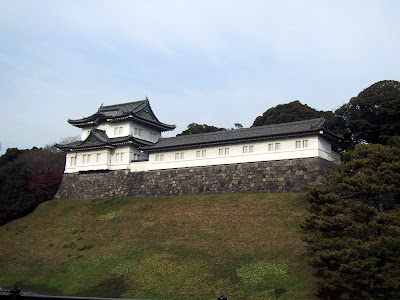Tokyo Imperial Palace (皇居 Kōkyo; literally, "Imperial Residence") is the main residence of the Emperor of Japan. It is a large park-like area located in the Chiyodaarea of Tokyo close to Tokyo Station and contains several buildings including the mainpalace (Kyūden (宮殿), the private residences of the imperial family, an archive, museum and administrative offices. It is built on the site of the old Edo castle. The total area including the gardens is 3.41 square kilometres (1.32 sq mi). During the height of the 1980s Japanese property bubble, the palace grounds were valued by some as more than the value of all the real estate in the state of California.




Central Tokyo, like Osaka, has been designed since about 1900 to be centered on major railway stations in a high-density fashion, so suburban railways were built relatively cheaply at street level and with their own right-of-way. This differs from many cities in the United States that are low-density and automobile-centric. Thoughexpressways have been built in Tokyo, the basic design has not Tokyo went on to suffer two major catastrophes in the 20th century, but it recovered from both. One was the 1923 Great Kantō earthquake, which left 140,000 dead or missing, and the other was World War II. The Bombing of Tokyo in 1944 and 1945, with 75,000 to 200,000 killed and half of the city destroyed, was almost as devastating as the atomic bombings of Hiroshima and Nagasaki combined.


